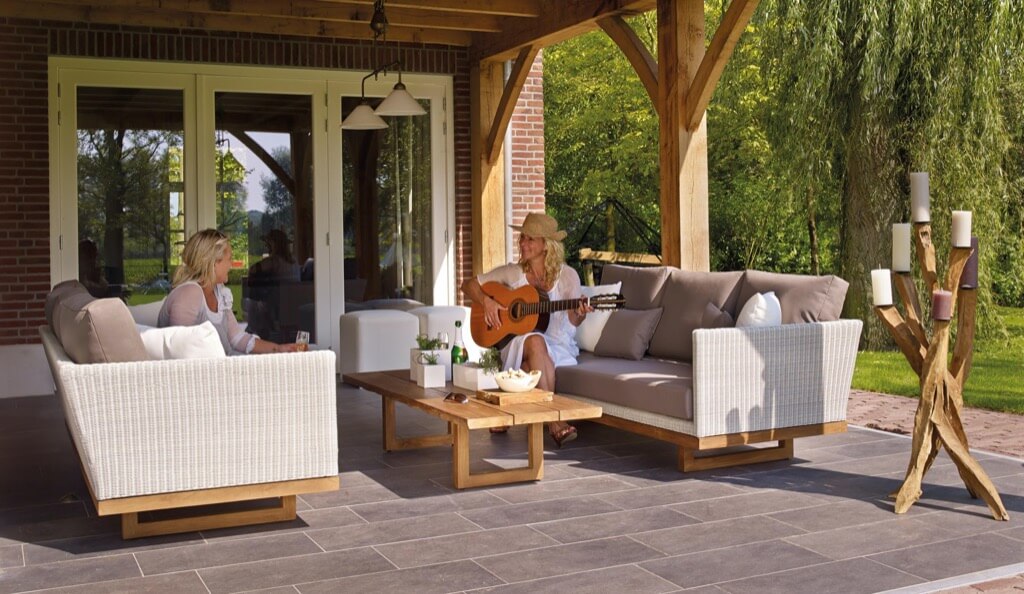Gardening, for many, embodies relaxation and a direct connection to Mother Earth. Yet, for some, the prospect of maintaining a garden feels more like an energy-draining chore than a soothing hobby. If you’re among those who adore the idea of a thriving garden but recoil at the thought of exhaustive tilling, watering, and weeding sessions, then you’re in for a treat. Let’s delve into some well-researched, effective techniques that promise a lush garden while emphasizing smart choices over strenuous work.
Pick the Right Plants
The foundation of a low-maintenance garden lies in your plant choices. When you opt for native or indigenous plants, you’re essentially choosing flora that’s well-adapted to the local climate and soil. This means less watering, fewer pests, and generally less work for you. For our readers in South Africa, succulents such as aloes or spekboom are not only hardy but also offer a unique aesthetic appeal.
Mulch, Your Time-Saver
Mulching is the unsung hero of the relaxed gardener. Not only does it retain soil moisture, reducing the need for constant watering, but it also suppresses weeds and enriches the soil over time. Organic mulches, like straw or bark, break down and replenish the soil’s nutrients, ensuring your plants stay happy and healthy with minimal intervention on your part.
Drip Irrigation
Traditional watering methods can be time-consuming and wasteful. Enter drip irrigation. This system ensures your plants get water directly to their roots, using less water and ensuring each plant gets the hydration it needs. It’s an initial setup that demands a bit of time, but in the long run, it’s a game-changer, especially in areas prone to drought, like parts of South Africa.
Opt for Perennials
Why keep planting every season when you can choose plants that’ll return year after year? Perennials, like lavender or rosemary, not only enhance your garden’s visual appeal but also cut down on the yearly task of replanting. Moreover, as they grow and mature, they often require less care, making your garden increasingly self-sustaining.
The Magic of Ground Covers
If you’re looking to prevent weed growth and reduce the vast stretches of open soil that demand attention, ground covers are your answer. Plants like creeping Jenny or clover form a dense carpet, leaving little room for weeds to take root. Not to mention, they add a splash of color and variety to your garden tapestry.
The Timely Art of Planting
In gardening, timing isn’t just about patience; it’s a fundamental ingredient for success. Planting at the opportune moment tailored to each plant species in your region can spell the difference between a thriving garden and a mediocre one. This doesn’t just apply to the global gardening scene. If you’re in South Africa, for instance, the diverse climate zones from the Mediterranean Cape to the subtropical Durban coast mean planting times can vary greatly. Preparation is paramount: conditioning the soil, allowing ample space between plants, and that first tender watering to help them root, sets the stage for a garden that’s not just alive but truly flourishing.
Crafting a Dense Oasis
The allure of a lush garden often lies in its dense, vibrant display of flora. This doesn’t happen by mere chance. By deliberately growing plants closer together, not only do you create a more luxuriant look but also foster a microenvironment where plants support one another. But density alone won’t cut it. Pruning – a task often seen as laborious – becomes an artistic endeavour, giving your garden shape, structure, and that professional touch. And here’s a golden nugget of wisdom: focus on enriching the soil, not just feeding the plants. A well-nourished soil will, in turn, sustain plants better. And while greenery is essential, introducing dashes of colour, perhaps through South African natives like the Bird of Paradise or Agapanthus, can elevate your garden from lush to downright stunning.
Planting with Precision
Creating a beautiful garden is more science than one might assume. Before plunging that first spade into the earth, several factors warrant consideration. First and foremost, understanding your soil. Does it lean sandy, or is it rich in clay? The pH level, or its acidity, can determine which plants will thrive and which might falter. Depth matters too – shallow soils might limit your plant choices, while deeper soils open up a plethora of options.
Light, often overlooked, can make or break your garden’s success. From full sun lovers to those that thrive in dappled shade, plants have their preferences. But beyond these basics, also factor in your hardiness zone, which dictates which plants can weather the local climate. And in a country as diverse as South Africa, microclimates – those small pockets of unique weather patterns – can exist, offering opportunities for varied planting.
Choosing the Right Plant Varieties for Easier Care
The diversity in plant species is not just about beauty; it’s about ease too. Some plants are naturally more resilient, drought-resistant, and require less upkeep. In South Africa, for example, indigenous plants like Spekboom (Portulacaria afra) or the hardy Aloe varieties are not only stunning but also adapted to thrive with minimal care. By opting for native or locally-adapted species, you’re not only supporting local biodiversity but also making a conscious choice for a low-maintenance garden.
Effective Mulching
Mulch, often seen as the unsung hero of the relaxed gardener, serves multiple purposes. It retains soil moisture, suppresses weeds, and enriches the soil as it breaks down. But beyond these, it provides an aesthetic touch, offering a neat, finished look to garden beds. Whether you’re using organic mulches like bark or straw or leaning towards inorganic options like stones or pebbles, mulching can dramatically reduce the time and effort spent in garden maintenance.
Automated Irrigation Systems
One of the most time-consuming tasks in gardening is watering. However, technology comes to the rescue with automated irrigation systems. Drip irrigation, soaker hoses, or even smart sprinklers can be tailored to your garden’s needs, ensuring plants get just the right amount of water without wastage. Especially in regions with water restrictions, like some parts of South Africa, these systems can be both a water-saving and time-saving blessing.
Companion Planting
Nature has its own way of balancing things out, and companion planting taps into this wisdom. By growing certain plants together, they can benefit each other, be it by repelling pests, enhancing growth, or aiding in soil nutrition. For instance, marigolds, with their bright allure, are known to deter certain pests, making them a great companion for many vegetable plants. Not only does this method reduce the need for chemical interventions, but it also creates a vibrant, diverse garden ecosystem.
Seasonal Planning for Continuous Blooms
To ensure your garden remains a visual treat throughout the year without constant effort, seasonal planning is essential. By selecting a mix of plants that bloom at different times, you can ensure there’s always something catching the eye in your garden. From spring bulbs like daffodils to summer bloomers and autumn golds, a well-planned garden offers a cyclic, ever-changing panorama of colors and textures. And the beauty of it? Once set, it requires minimal intervention, letting you enjoy the changing seasons without the associated gardening frenzy.
Engage with Our Gardening Community
Your journey in cultivating a serene and lush garden should be a shared experience. Do you have insights, personal anecdotes, or innovative ideas on our “Guide for the Relaxed Gardener”? Dive into the conversation by leaving your thoughts in the comment section below. If this guide resonated with you, consider sharing it within your social circles — perhaps you’ll inspire a fellow gardening enthusiast.
Moreover, for a daily dose of gardening inspiration and to become part of our thriving community, connect with us on our social networks. Together, let’s make gardening not just a task, but a delightful, collective exploration.
If you’ve found resonance with this approach and wish to delve deeper into the nuances of effortless gardening, the author welcomes you to engage further. Follow the contact form for a personalized interaction, and together, let’s cultivate gardens that are both breathtaking and blissfully simple to maintain.




